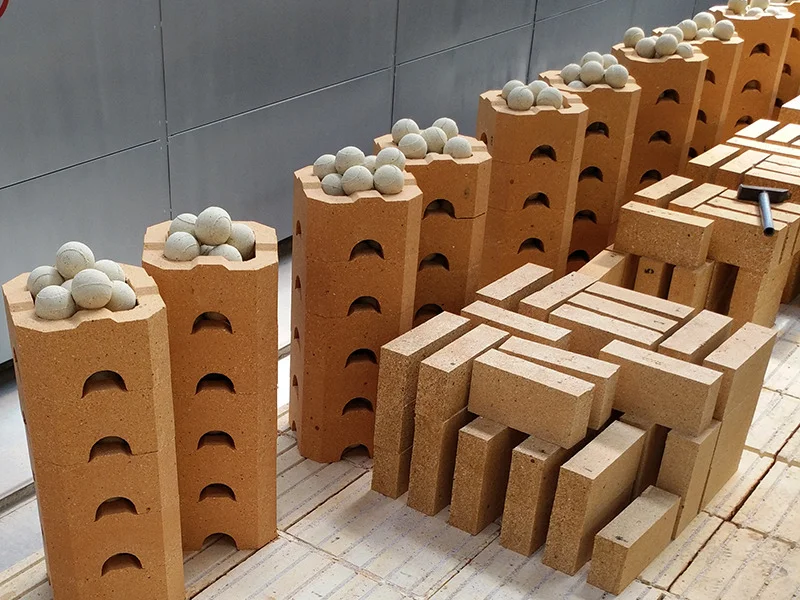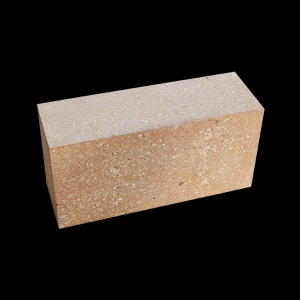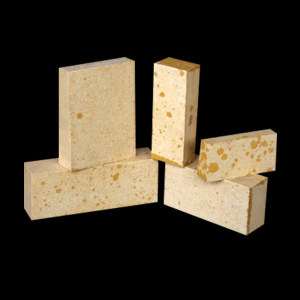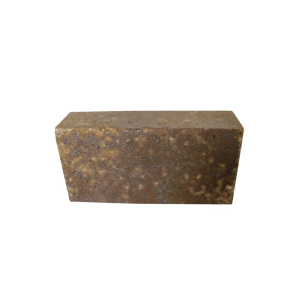Refractory bricks are crucial components in industries requiring high-temperature materials that can withstand severe conditions without compromising performance. From steelmaking to glass production, their ability to resist heat, chemical corrosion, and mechanical stress makes them indispensable. Understanding the manufacturing process of refractory bricks sheds light on the intricate steps involved in creating these durable materials.

Selection of Raw Materials
The quality and properties of the refractory bricks manufacturing process begin with the selection of raw materials. The choice depends on the intended application and desired characteristics of the final product. Common raw materials include:
- Refractory Aggregates: Such as alumina, silica, magnesia, chromite, zirconia, and others, which provide the main structural integrity and heat resistance.
- Binders: Various binders like clay, calcium aluminate cement, and colloidal silica are used to hold the refractory aggregates together and impart cohesive strength.
- Additives: These include materials like graphite, antioxidants, and anti-wetting agents, which enhance specific properties such as thermal shock resistance, erosion resistance, and ease of installation.
Mixing and Preparation
Once selected, raw materials undergo precise mixing to achieve a uniform composition. The process typically involves:
- Batching: Weighing and proportioning raw materials according to the desired recipe or formulation.
- Mixing: Mechanical blending of the materials to ensure homogeneity and consistent distribution of particles and additives. We also produce kiln furniture for sale.

Shaping
After mixing, the prepared refractory material is shaped into bricks using various methods:
- Pressing: For dense and heavy bricks, the material is compacted using hydraulic presses to achieve the desired shape and density.
- Extrusion: For shapes like tubes or complex geometries, the material is forced through a die under pressure to form continuous lengths which are then cut into bricks.
Drying
Once shaped, the green bricks undergo controlled drying to remove excess moisture and prepare them for firing. Proper drying prevents cracking and ensures dimensional stability during subsequent heating processes. We also produce aluminum nitride plate.
Firing (Sintering)
The dried green bricks are fired in kilns at temperatures ranging from 1300°C to 1800°C (2372°F to 3272°F), depending on the type of refractory material and desired properties. This firing process, known as sintering, serves several crucial purposes:
- Densification: The high temperatures cause the refractory aggregates and binders to chemically and physically bond, forming a dense and strong matrix.
- Chemical and Physical Changes: The firing process drives off remaining volatile components and initiates chemical reactions that enhance the brick’s final properties, such as increased strength, thermal stability, and resistance to chemical attack.

Cooling and Quality Control
After firing, the high temperature refractory materials of refractory bricks are slowly cooled in the kiln to prevent thermal shock and maintain structural integrity. Quality control checks, including dimensional accuracy, strength testing, and thermal conductivity measurements, ensure that the bricks meet the specified standards and performance criteria.
Finishing and Packaging
Once cooled and inspected, the refractory bricks may undergo additional finishing processes such as grinding or polishing to achieve precise dimensions or smooth surfaces. They are then packaged and prepared for shipment to customers or storage in readiness for industrial use.

Conclusion
The manufacturing process of refractory bricks is a meticulous combination of material selection, precise formulation, shaping, firing, and quality control measures. Each step is crucial in ensuring that the final product meets the demanding requirements of high-temperature applications across diverse industries. By understanding these processes, manufacturers and end-users can appreciate the craftsmanship and engineering behind these essential components that contribute to the reliability and efficiency of industrial operations worldwide.







 Wechat Us
Wechat Us